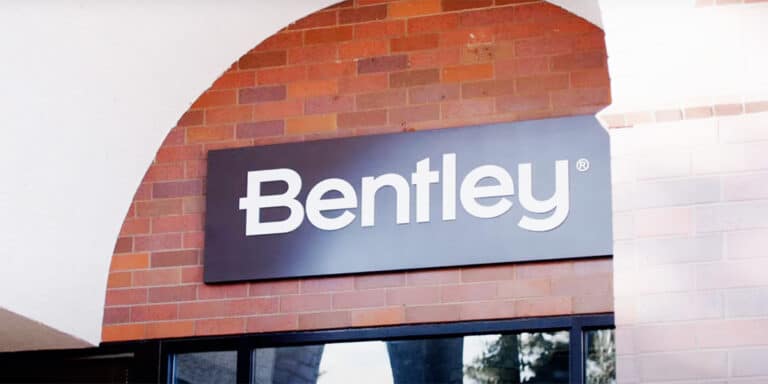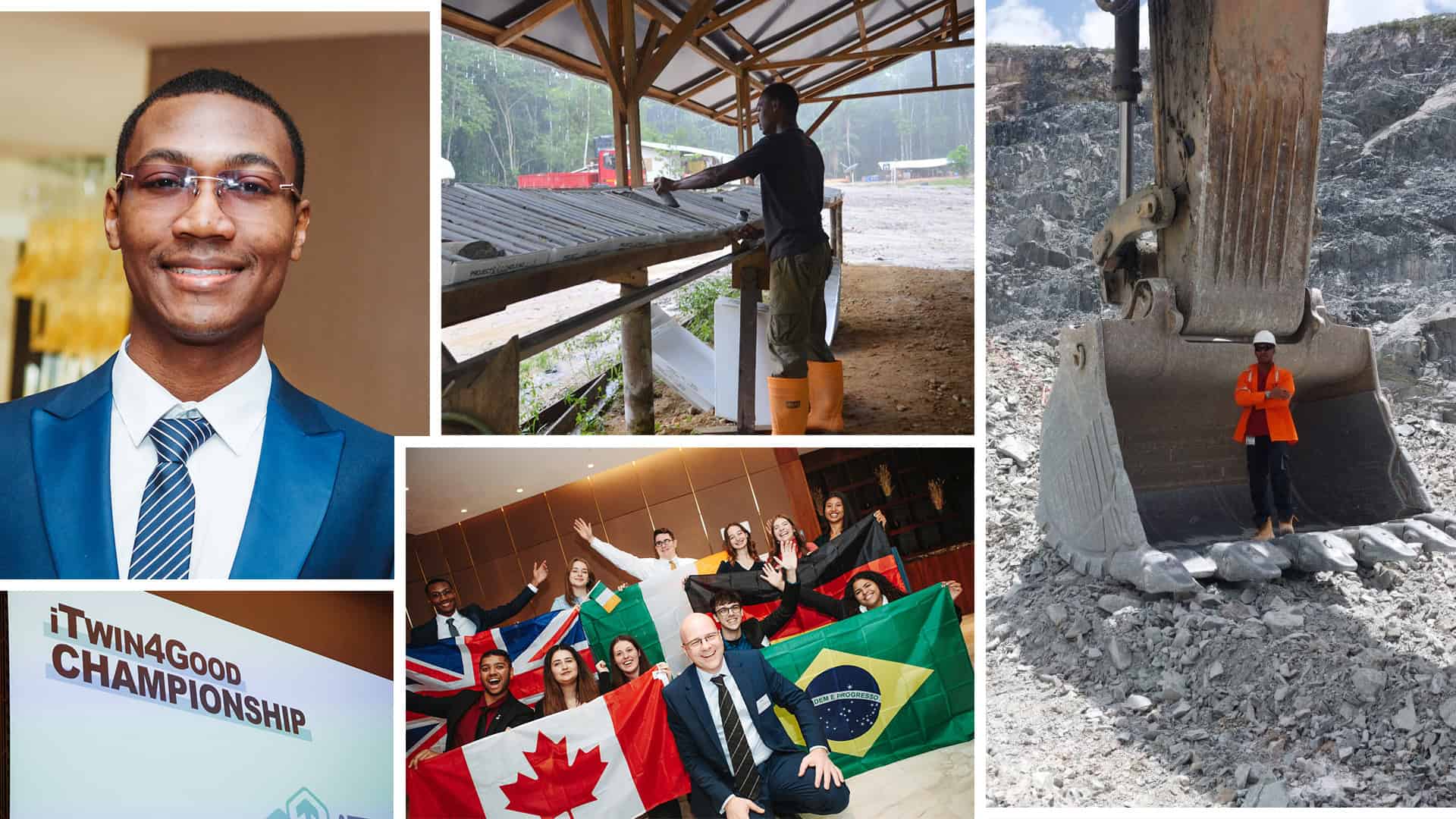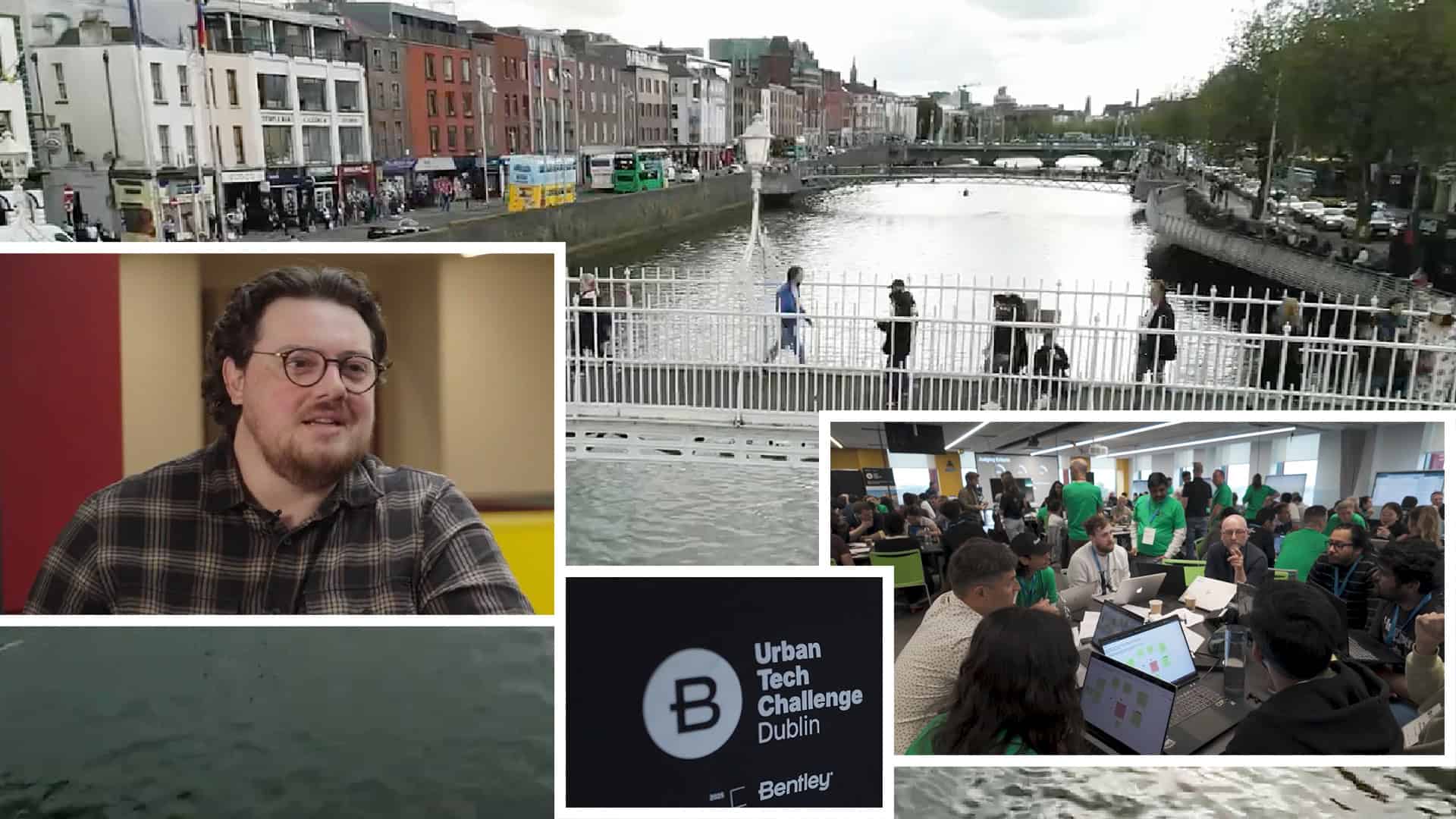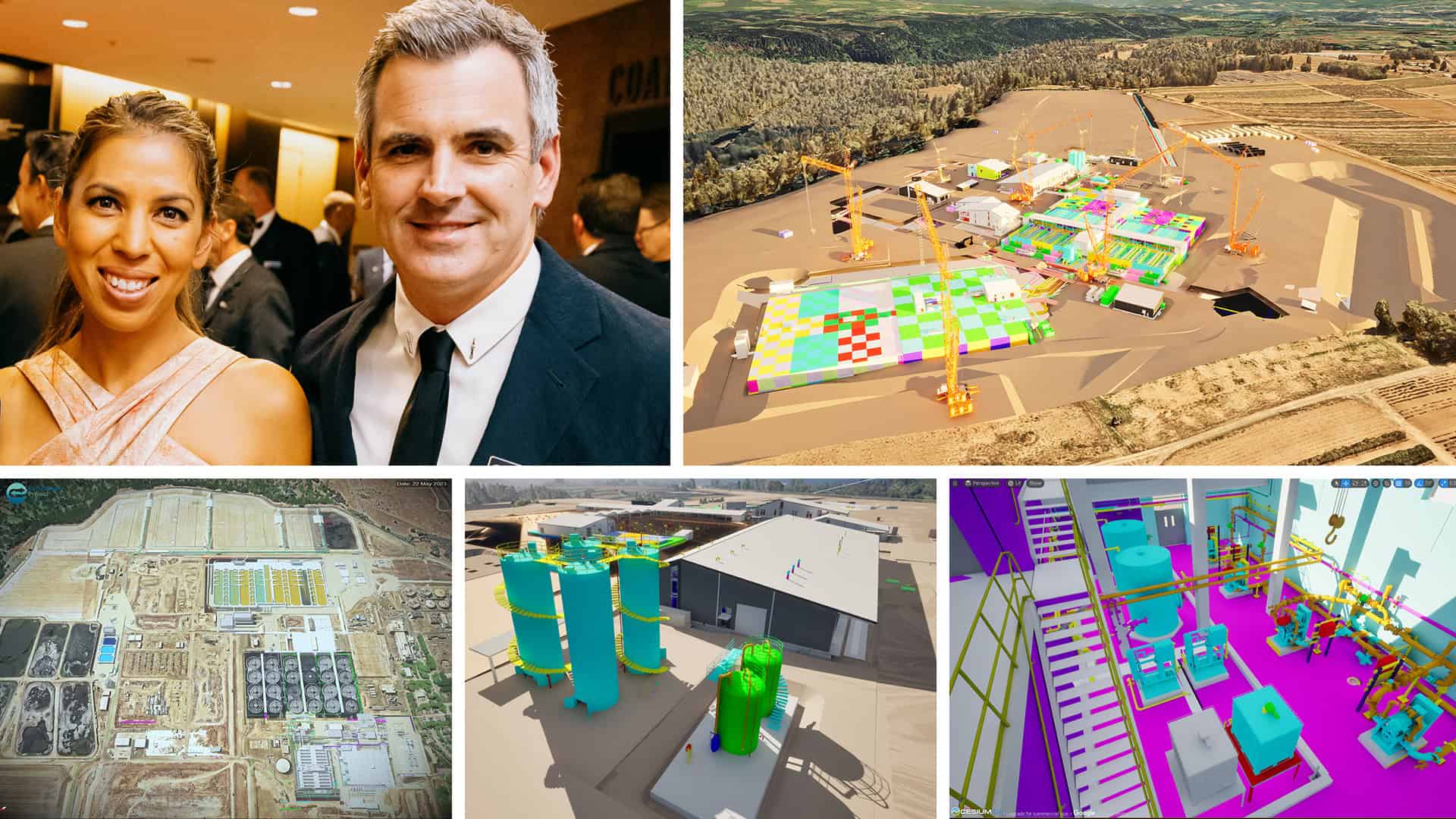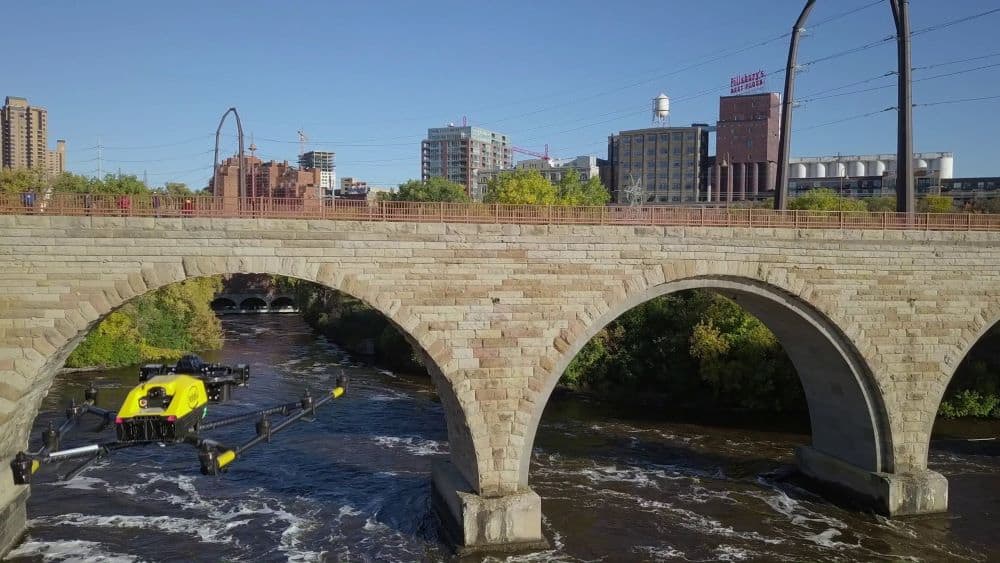David Settlemyer had a distinct knack for making the impossible seem inevitable.
Armed with a Southern drawl and an arsenal of folksy colloquialisms — “as useful as socks on a rooster” was a favorite — the Kannapolis, North Carolina native could sell a room of skeptical engineers or investors on a future they’d never dared to imagine.
That future included one where artificial intelligence would automate laborious civil site design work—or, as Settlemyer put it, letting “an engineer be an engineer, not a drafter.” That vision turned out to be his life’s work, legacy, and ultimately, parting gift to an industry he was deeply passionate about. Settlemyer, Bentley Systems’ senior product manager for civil engineering, passed away in April from cancer at the age of 54. His baby was OpenSite+, the groundbreaking, AI-powered engineering software that helps civil engineers design land development sites up to 10 times faster than traditional methods and with greater accuracy.
“David was a brilliant engineer who, like an artist, could project into the future and envision the value a tool could create while maintaining an understanding of current reality,” says Francois Valois, senior vice president of Open Applications at Bentley Systems. “Usually engineers are very Cartesian, pragmatic, binary professionals, so these rare gifts truly defined him and distinguished him from his peers.”
The roots of OpenSite+ trace back two decades. AI pioneers Thomas Bäck, Ron Breukelaar and others at Charlotte-based Blueridge Analytics were trying to fix a problem then plaguing the construction industry. Land developers were shouldering enormous financial risks to buy huge tracts of land and expected civil engineers to quickly and cost-effectively design sites—an often-fraught task. Bäck and Breukelaar came up with the idea to use AI to analyze the sites and provide millions of iterations for development, spitting out valuable insights for investors and minimizing risk.
But the two men wanted to better understand their target customer base. Enter Settlemyer, a trained surveyor who at the time owned a civil engineering firm. “From a software perspective, we needed a civil engineer who could explain to us the ins and outs of that world and ensure the software we were building met their needs and delivered value,” Breukelaar says. “Nobody was seeing eye to eye with us until we met David.”
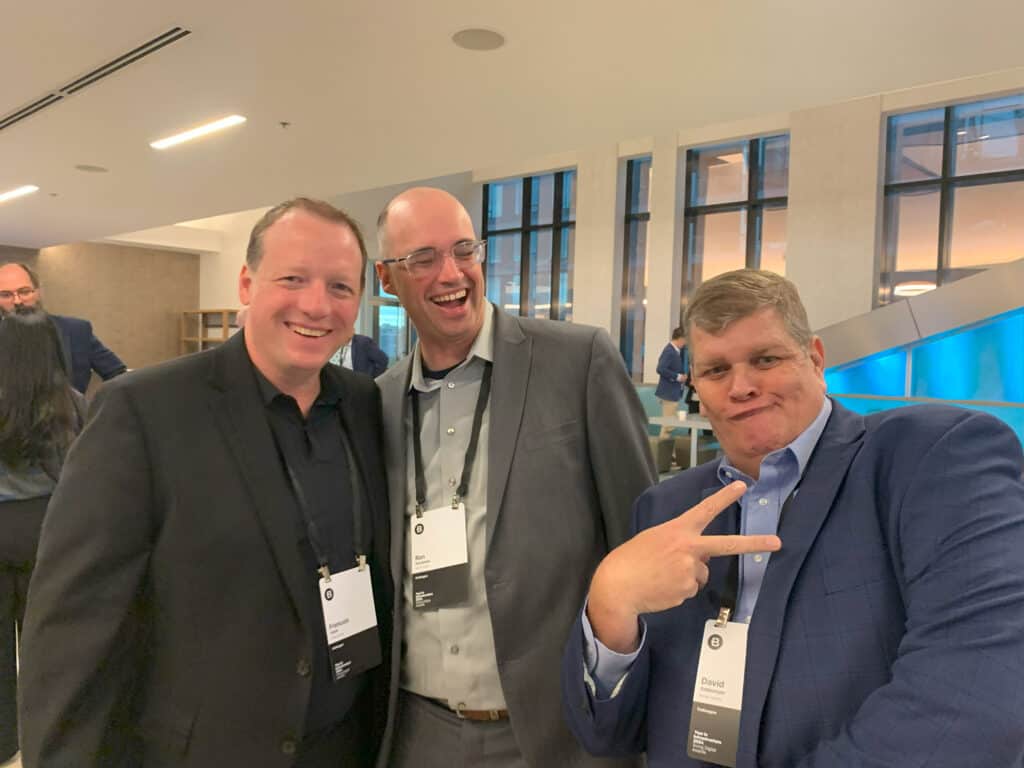
Settlemyer left his firm and took a pay cut to join Blueridge Analytics and develop what would become SiteOps — the first civil design application powered entirely by AI. It fit his passion for driving efficiencies in civil site design. “He jumped on the idea of SiteOps, gave up a stable paycheck, and pushed it to a successful product when no other PE did,” Breukelaar adds. “David was a visionary in every aspect of the word.” He continues, “David liked the idea of pushing software where there was frustration in the market. SiteOps was very much a conceptual tool engineers could use to de-risk a project.”
Settlemyer brought not only a first-hand understanding of the daily challenges civil engineers face. He could also break down complex technical concepts to land developers, potential investors, and CEOs, never shedding his Southern-ness or sense of humor.
“When I first met David, I thought he was a true caricature of a Southerner — pickup truck, chewing tobacco, fried turkey, skeet shooting,” recalls Breukelaar, who is from the Netherlands.
But the pair became fast friends and complementary colleagues. “It took him awhile to understand how to talk in software terms, and it took me awhile to learn how to talk in civil engineering terms, but it’s safe to say that everything I know about civil engineering is based on what David taught me.”
Many Blueridge clients became SiteOps believers and early adopters thanks to Settlemyer’s no-nonsense approach. A Steve Jobs-like dreamer without the black turtleneck, Settlemyer would jump at the chance to demo and train anyone who would listen, weaving in jokes and personal anecdotes for affect.
“We got extremely lucky because he was a very good teacher and an incredibly direct presenter who never minced words,” Breukelaar says. “When you heard him, you instantly believed him.”
Settlemyer began offering SiteOps to construction and engineering firms, quickly turning heads. The software ultimately caught the attention of Greg Bentley, then-CEO of Bentley Systems, which acquired Blueridge Analytics in 2014.
Over the last few years, Bentley has used advances in generative AI to take Settlemyer’s civil design vision to new heights. SiteOps evolved into OpenSite Designer and, in October 2024, OpenSite+. The software automates drawing production capabilities and trims tedious, time-consuming tasks from hours to seconds — a big plus for an industry facing a shortage of engineering talent. The software creates site designs by quickly generating options that streamline the notoriously complex site balancing process. Users can control the software with their voice and prompt it to edit footprints for buildings, parking layouts, driveways, sidewalks, ponds, and other infrastructure.
Joe Viscuso, head of strategic growth for Philadelphia-based engineering and design consulting firm Pennoni and an adjunct professor of land development at Widener University, advised Bentley throughout the OpenSite+ development process. “We used to measure change in decades,” Viscuso says, “Now in the age of AI, we measure it in weeks, days, and minutes.”
What set Settlemyer apart from his peers was what colleagues call his “software sense.” He could see around corners and work backwards to brainstorm with software developers to build solutions that didn’t yet exist.
Francois Valois, who was Settlemyer’s manager, praised his ability to bridge the gap between traditional engineering values and next-gen technological possibility. “He was a marketing specialist who could clearly articulate software concepts without smoke and mirrors,” Valois says. “Most visuals you see at YII of Open Site+ or Open Site Designer were made by David. Without his creativity — which helped attract internal investment and external interest — these tools would have been incredibly hard, if not impossible, to create and launch.”
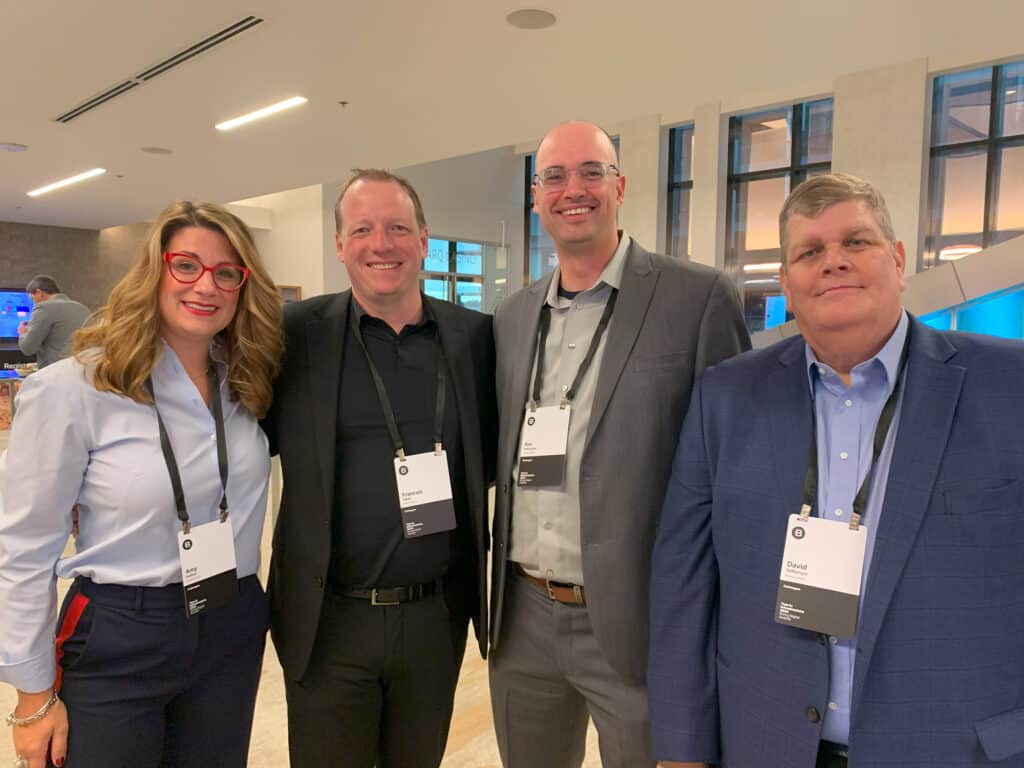
Collaborators remember Settlemyer as a complex personality with a razor-sharp wit, eclectic musical taste, and passion for bourbon and skeet shooting. His warm, comforting presence had a way of instantly putting coworkers and customers at ease. “He was one of those down-home, easy-to-talk-to type of gentlemen,” says David Garrigues, owner of Kimley-Horn, a Greenville-S.C.-based engineering, planning, and design consulting firm. “David had a gentle, yet raw, honesty about him that made him a trusted partner.”
Amy Heffner, director of Industry Marketing at Bentley, says her favorite memories of Settlemyer were made during product video shoots, which illuminated his character and yielded endlessly hilarious blooper reels.
“Product launches, especially those on the scale of OpenSite+, can be extremely stressful,” Heffner says. “But David always brought a lightness to the process. It never felt like work with him… it felt like spending time with a friend.”
She adds, “He always took the time to teach you about the industry based on his experience. He could explain anything and was so well spoken, which made our jobs as marketers much easier. He was a great educator and storyteller who was smart, dedicated, and deeply knowledgeable, but also fun, engaging, and easy to work with.”
Even as David pushed through pain in his final months, he stayed focused on getting OpenSite+ over the finish line. “He was very open about his treatment but didn’t want to be known for his diagnosis, and he didn’t want sympathy,” Heffner recalls. “He wanted to see his dream become a reality.”
Settlemyer is survived by his wife, Wendy, and son, Chas. His dedication and ingenuity continue to fuel the Bentley team responsible for the product he spent 16 years . After Settlemyer’s passing, Bentley renamed in his honor its Open Applications Award, given to those who best exemplify teamwork and collaboration.
“We organized a sprint in Quebec a few weeks ago, and you could feel David’s spirit in the room,” Valois says. “Bentley assembled the world’s strongest team of AI specialists, software developers, and subject matter experts to make his vision a reality, and we’re all working hard on his behalf to deliver what was once seen as an impossible goal, many of us are now doing it for Dave. Because that’s what he wanted to leave as his legacy.”



